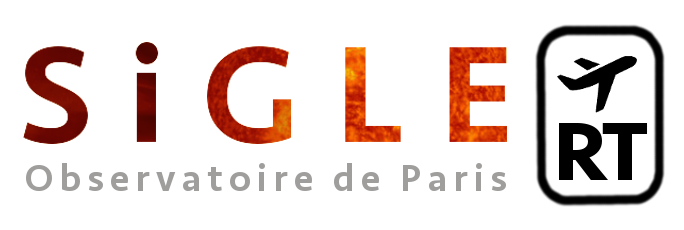 02/11/2021
The SiGLERT system, which detects GLEs and assesses the corresponding radiation dose due to solar proton, has detected a new event
02/11/2021
The SiGLERT system, which detects GLEs and assesses the corresponding radiation dose due to solar proton, has detected a new event
SiGLE
RT
detects GLEs (Ground Level Events) in real time by analyzing the data from the neutron monitor network (see NMDB

). On october 28
th such an event occured and was detected a few minutes after its onset. A first pre-alert was set at 16:10UT, and five minutes later the alert was confirmed, as shown on the pictures below. As NMs sometimes show spikes in their real time data, the system needs more than one NM and some hindsight to confirm the detection.
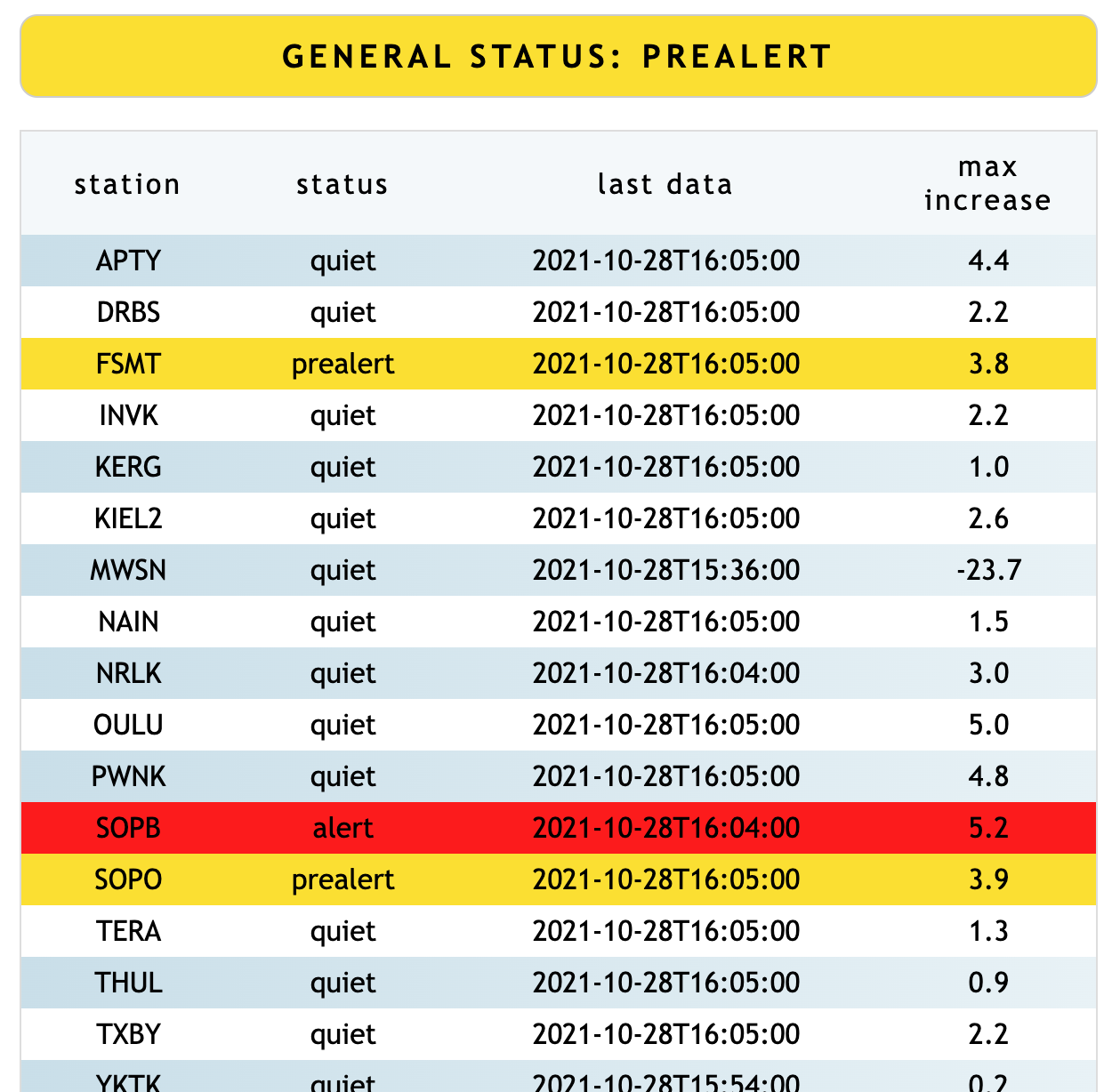
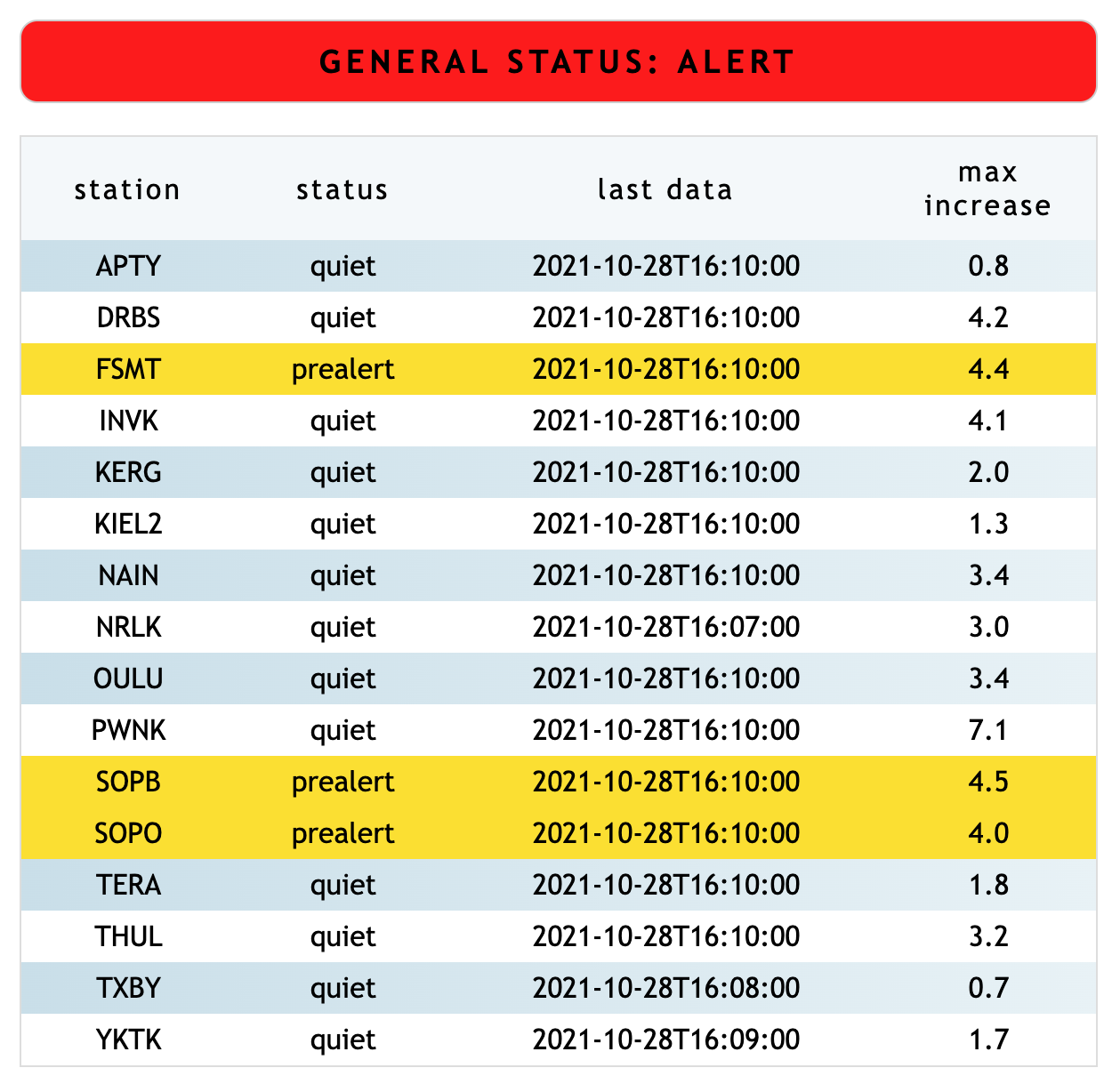
Indeed three neutron monitors showed a clear enhancement in the first stage of the event (South Pole-SOPO, South Pole Bare NM-SOPB, Fort Smith-FSMT). The count rates at other NMs count rates started to rise soon after, but with slightly weaker increases. Note that both SOPO and SOPB are high altitudes polar NMs and therefore sensitive to particles of lower energies, which are more numerous than those detected by NMs at sea level. None of the low latitude NMs, even high altitude ones, showed any significant response to the solar particules.
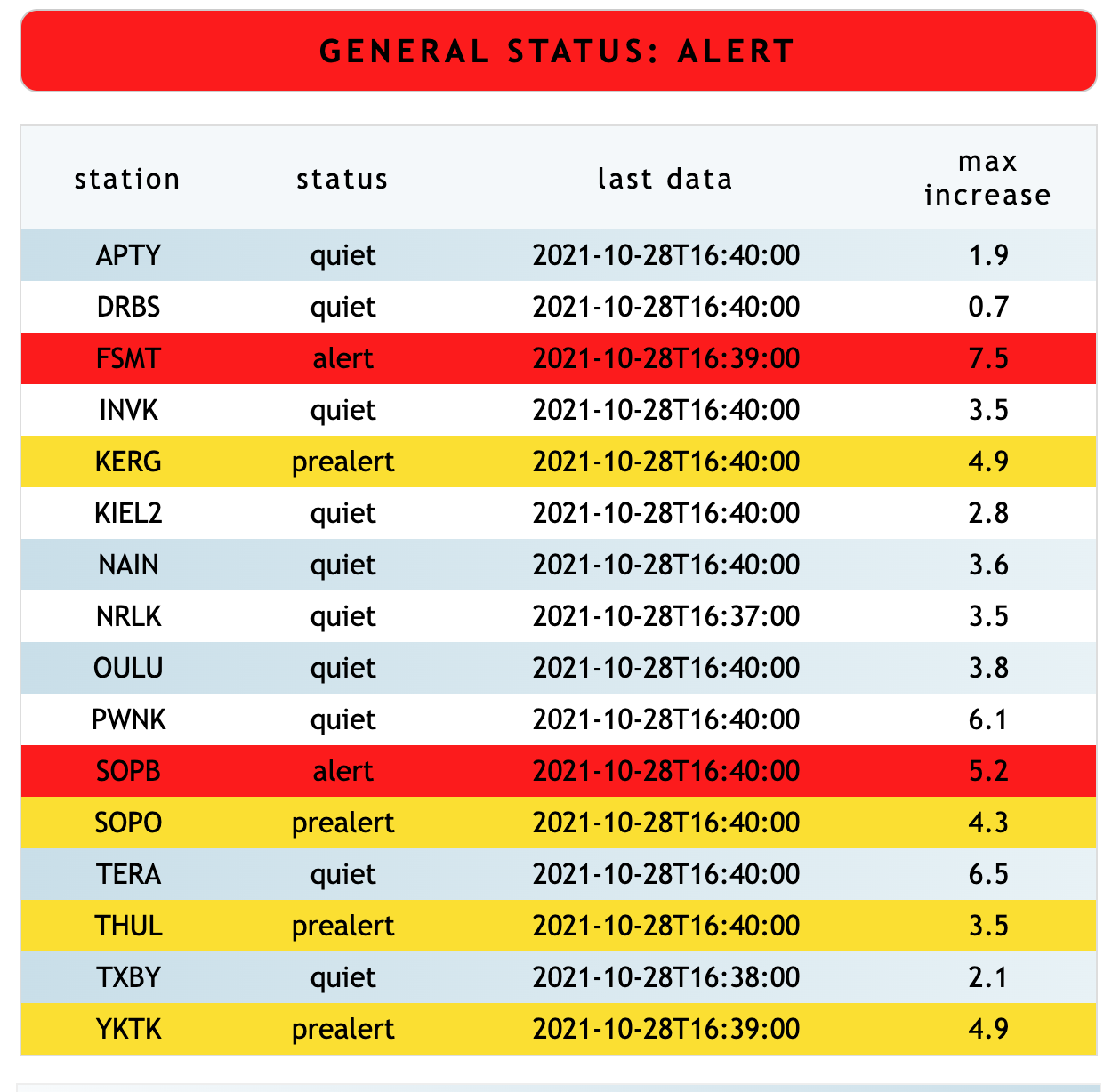
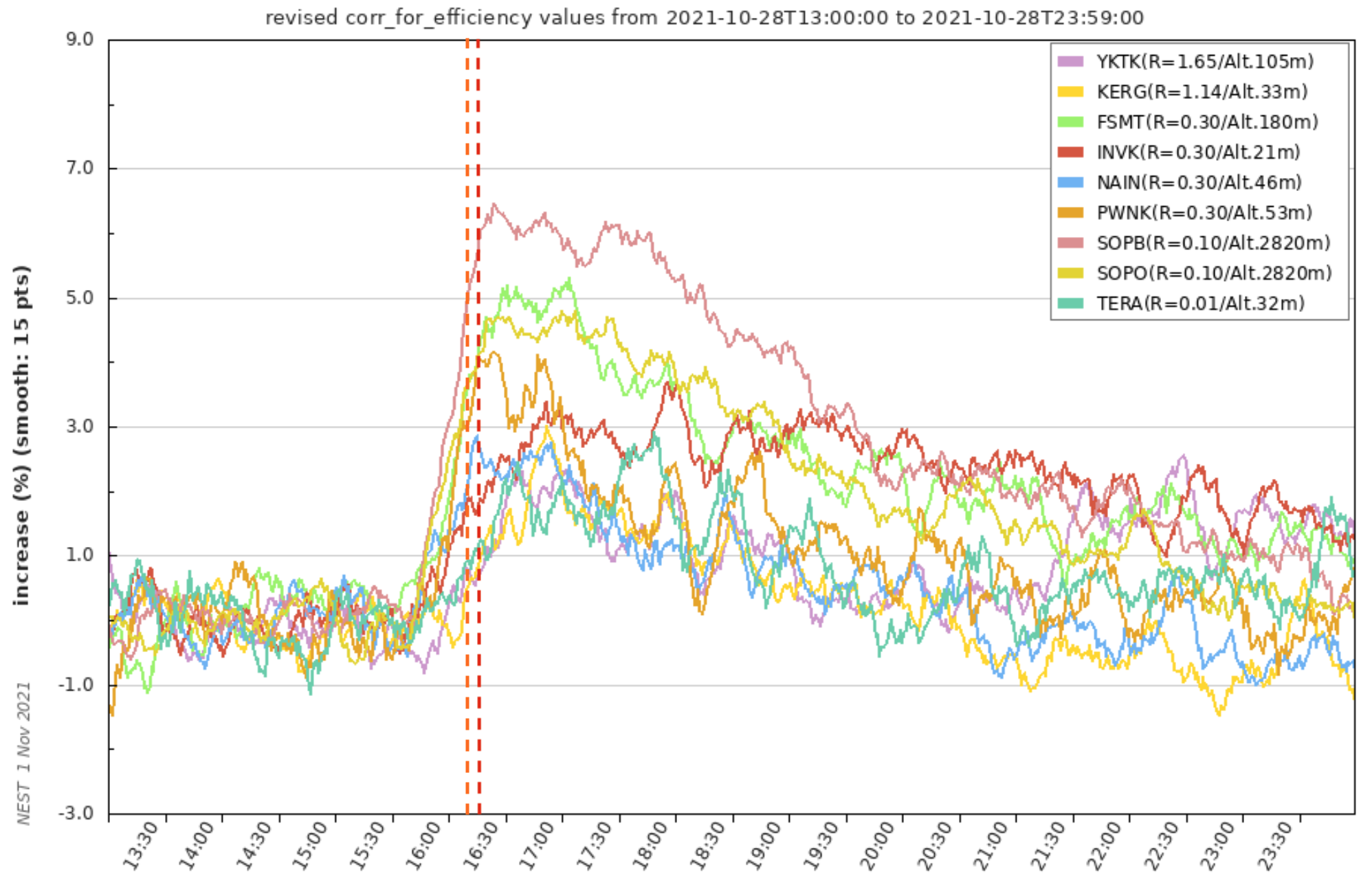
The figure above shows the GLE as seen by a selection of high latitude NMs (data has been smoothed over 15mn for a better visibility), together with the pre-alert and alert times. Raw 1 minute increases of sea level NMs barely reach 8% above the pre-event background level. For such a weak event, radiations doses at flight altitudes are negligible and do not exceed the thresholds defined by the International Civil Aviation Organisation (OACI) to take any action towards aircrews and airlines. Anyhow, this event qualifies as a GLE and will be numbered as GLE 73 (first GLE recorded in 1942)
Contact:
Karl-Ludwig Klein, LESIA Observatoire de Paris, PSL, CNRS, Meudon
Ludwig.klein-at-observatoiredeparis.psl.eu
Nicolas Fuller, LESIA Observatoire de Paris, PSL, CNRS, Meudon
nicolas.fuller-at-observatoiredeparis.psl.eu